James M. Whitacre
The Diversity Paradox: How Nature Resolves an Evolutionary Dilemma
Dec 14, 2011Abstract:Adaptation to changing environments is a hallmark of biological systems. Diversity in traits is necessary for adaptation and can influence the survival of a population faced with novelty. In habitats that remain stable over many generations, stabilizing selection reduces trait differences within populations, thereby appearing to remove the diversity needed for heritable adaptive responses in new environments. Paradoxically, field studies have documented numerous populations under long periods of stabilizing selection and evolutionary stasis that have rapidly evolved under changed environmental conditions. In this article, we review how cryptic genetic variation (CGV) resolves this diversity paradox by allowing populations in a stable environment to gradually accumulate hidden genetic diversity that is revealed as trait differences when environments change. Instead of being in conflict, environmental stasis supports CGV accumulation and thus appears to facilitate rapid adaptation in new environments as suggested by recent CGV studies. Similarly, degeneracy has been found to support both genetic and non-genetic adaptation at many levels of biological organization. Degenerate, as opposed to diverse or redundant, ensembles appear functionally redundant in certain environmental contexts but functionally diverse in others. CGV and degeneracy paradigms for adaptation are integrated in this review, revealing a common set of principles that support adaptation at multiple levels of biological organization. Though a discussion of simulation studies, molecular-based experimental systems, principles from population genetics, and field experiments, we demonstrate that CGV and degeneracy reflect complementary top-down and bottom-up, respectively, conceptualizations of the same basic phenomenon and arguably capture a universal feature of biological adaptive processes.
Spontaneous organization leads to robustness in evolutionary algorithms
Feb 06, 2011Abstract:The interaction networks of biological systems are known to take on several non-random structural properties, some of which are believed to positively influence system robustness. Researchers are only starting to understand how these structural properties emerge, however suggested roles for component fitness and community development (modularity) have attracted interest from the scientific community. In this study, we apply some of these concepts to an evolutionary algorithm and spontaneously organize its population using information that the population receives as it moves over a fitness landscape. More precisely, we employ fitness and clustering based driving forces for guiding network structural dynamics, which in turn are controlled by the population dynamics of an evolutionary algorithm. To evaluate the effect this has on evolution, experiments are conducted on six engineering design problems and six artificial test functions and compared against cellular genetic algorithms and 16 other evolutionary algorithm designs. Our results indicate that a self-organizing topology evolutionary algorithm exhibits surprisingly robust search behavior with promising performance observed over short and long time scales. After a careful analysis of these results, we conclude that the coevolution between a population and its topology represents a powerful new paradigm for designing robust search heuristics.
Robustness and Adaptiveness Analysis of Future Fleets
Jul 03, 2009



Abstract:Making decisions about the structure of a future military fleet is a challenging task. Several issues need to be considered such as the existence of multiple competing objectives and the complexity of the operating environment. A particular challenge is posed by the various types of uncertainty that the future might hold. It is uncertain what future events might be encountered; how fleet design decisions will influence and shape the future; and how present and future decision makers will act based on available information, their personal biases regarding the importance of different objectives, and their economic preferences. In order to assist strategic decision-making, an analysis of future fleet options needs to account for conditions in which these different classes of uncertainty are exposed. It is important to understand what assumptions a particular fleet is robust to, what the fleet can readily adapt to, and what conditions present clear risks to the fleet. We call this the analysis of a fleet's strategic positioning. This paper introduces how strategic positioning can be evaluated using computer simulations. Our main aim is to introduce a framework for capturing information that can be useful to a decision maker and for defining the concepts of robustness and adaptiveness in the context of future fleet design. We demonstrate our conceptual framework using simulation studies of an air transportation fleet. We capture uncertainty by employing an explorative scenario-based approach. Each scenario represents a sampling of different future conditions, different model assumptions, and different economic preferences. Proposed changes to a fleet are then analysed based on their influence on the fleet's robustness, adaptiveness, and risk to different scenarios.
Network Topology and Time Criticality Effects in the Modularised Fleet Mix Problem
Jul 03, 2009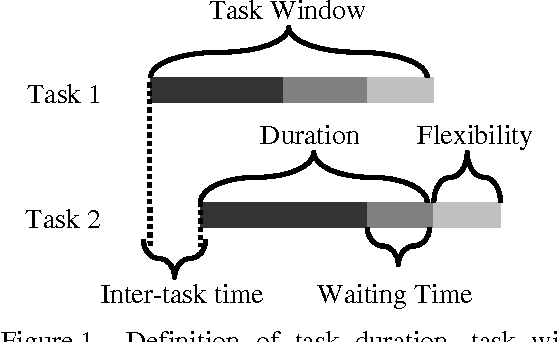
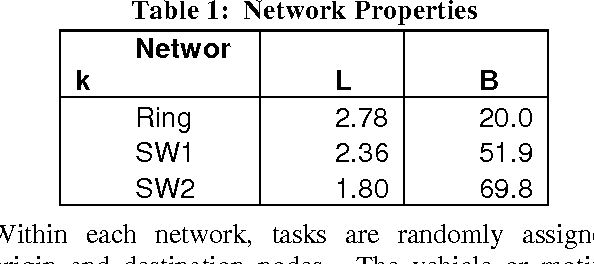

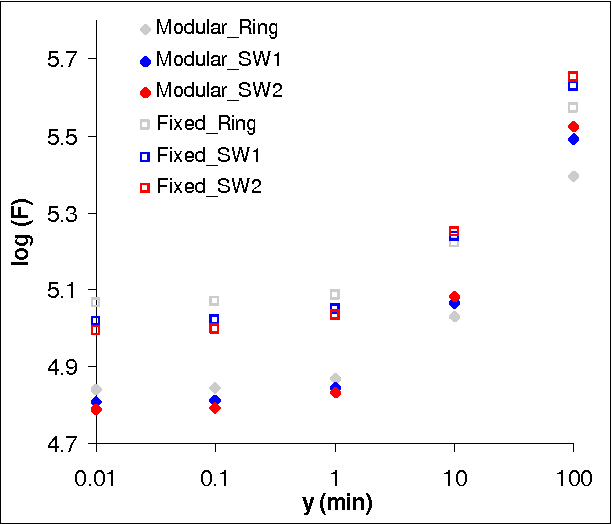
Abstract:In this paper, we explore the interplay between network topology and time criticality in a military logistics system. A general goal of this work (and previous work) is to evaluate land transportation requirements or, more specifically, how to design appropriate fleets of military general service vehicles that are tasked with the supply and re-supply of military units dispersed in an area of operation. The particular focus of this paper is to gain a better understanding of how the logistics environment changes when current Army vehicles with fixed transport characteristics are replaced by a new generation of modularised vehicles that can be configured task-specifically. The experimental work is conducted within a well developed strategic planning simulation environment which includes a scenario generation engine for automatically sampling supply and re-supply missions and a multi-objective meta-heuristic search algorithm (i.e. Evolutionary Algorithm) for solving the particular scheduling and routing problems. The results presented in this paper allow for a better understanding of how (and under what conditions) a modularised vehicle fleet can provide advantages over the currently implemented system.
Use of statistical outlier detection method in adaptive evolutionary algorithms
Jul 03, 2009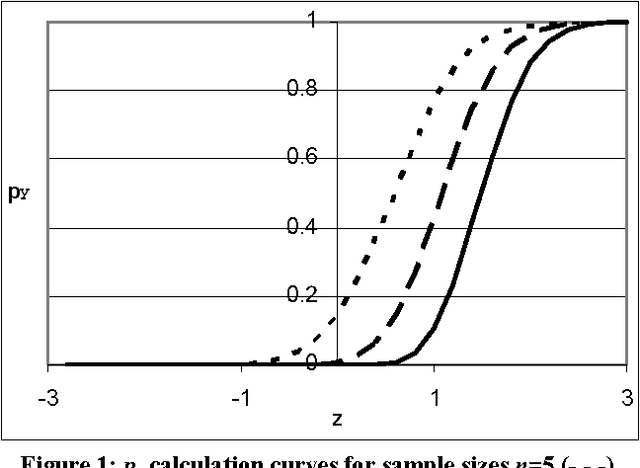
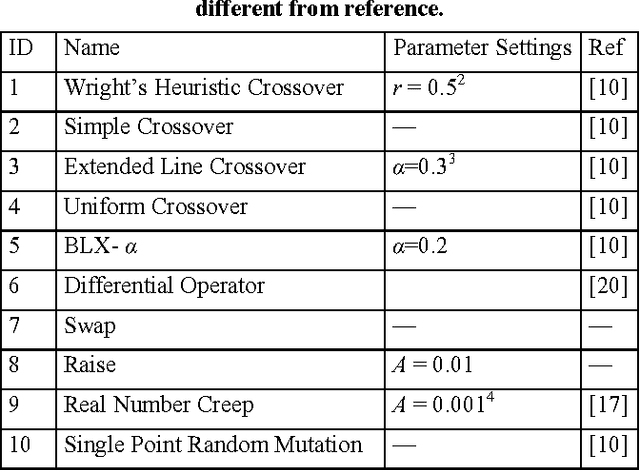
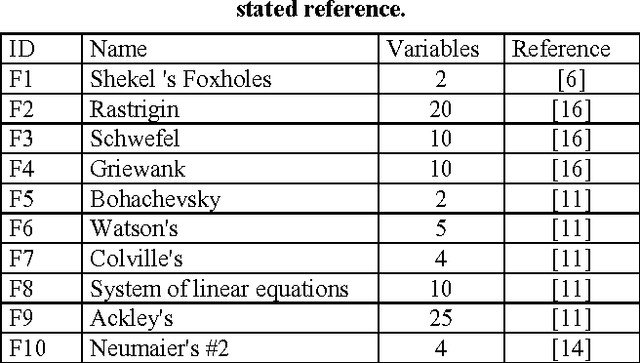
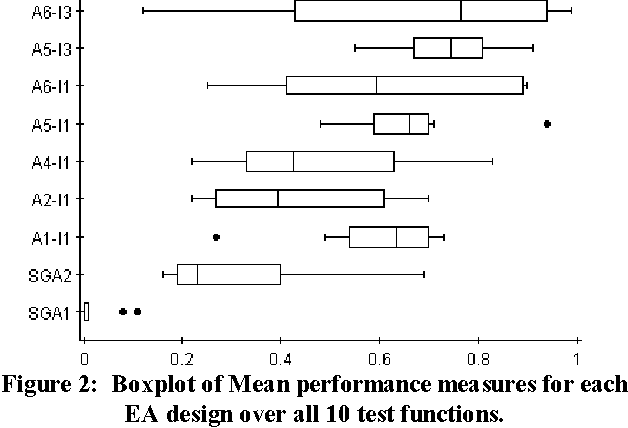
Abstract:In this paper, the issue of adapting probabilities for Evolutionary Algorithm (EA) search operators is revisited. A framework is devised for distinguishing between measurements of performance and the interpretation of those measurements for purposes of adaptation. Several examples of measurements and statistical interpretations are provided. Probability value adaptation is tested using an EA with 10 search operators against 10 test problems with results indicating that both the type of measurement and its statistical interpretation play significant roles in EA performance. We also find that selecting operators based on the prevalence of outliers rather than on average performance is able to provide considerable improvements to adaptive methods and soundly outperforms the non-adaptive case.
Credit Assignment in Adaptive Evolutionary Algorithms
Jul 03, 2009



Abstract:In this paper, a new method for assigning credit to search operators is presented. Starting with the principle of optimizing search bias, search operators are selected based on an ability to create solutions that are historically linked to future generations. Using a novel framework for defining performance measurements, distributing credit for performance, and the statistical interpretation of this credit, a new adaptive method is developed and shown to outperform a variety of adaptive and non-adaptive competitors.
Strategic Positioning in Tactical Scenario Planning
Jul 02, 2009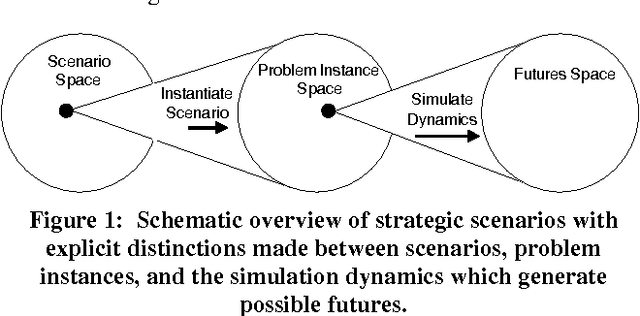



Abstract:Capability planning problems are pervasive throughout many areas of human interest with prominent examples found in defense and security. Planning provides a unique context for optimization that has not been explored in great detail and involves a number of interesting challenges which are distinct from traditional optimization research. Planning problems demand solutions that can satisfy a number of competing objectives on multiple scales related to robustness, adaptiveness, risk, etc. The scenario method is a key approach for planning. Scenarios can be defined for long-term as well as short-term plans. This paper introduces computational scenario-based planning problems and proposes ways to accommodate strategic positioning within the tactical planning domain. We demonstrate the methodology in a resource planning problem that is solved with a multi-objective evolutionary algorithm. Our discussion and results highlight the fact that scenario-based planning is naturally framed within a multi-objective setting. However, the conflicting objectives occur on different system levels rather than within a single system alone. This paper also contends that planning problems are of vital interest in many human endeavors and that Evolutionary Computation may be well positioned for this problem domain.
The Self-Organization of Interaction Networks for Nature-Inspired Optimization
Jul 02, 2009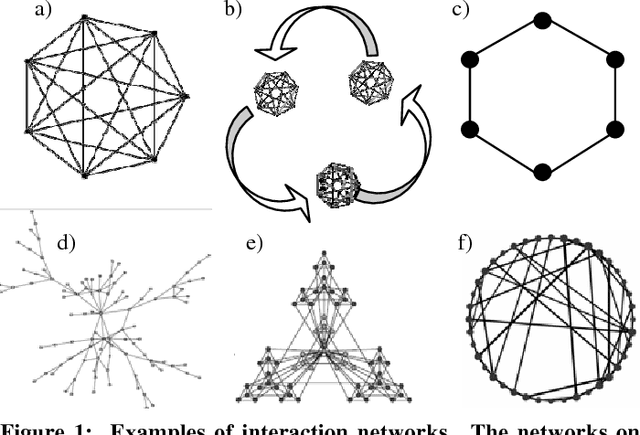
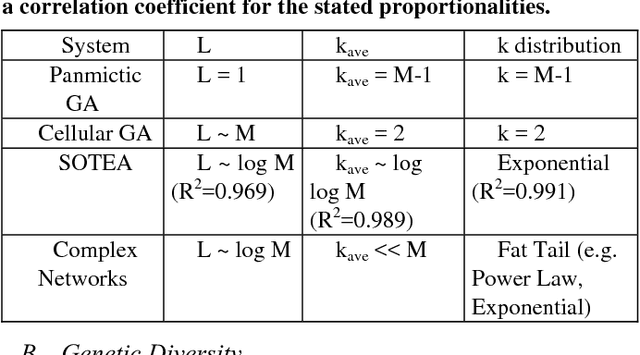
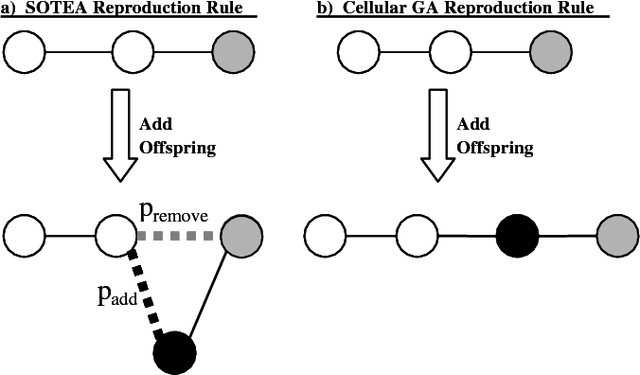
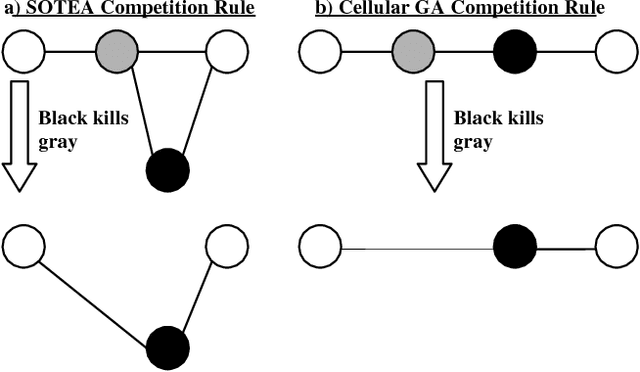
Abstract:Over the last decade, significant progress has been made in understanding complex biological systems, however there have been few attempts at incorporating this knowledge into nature inspired optimization algorithms. In this paper, we present a first attempt at incorporating some of the basic structural properties of complex biological systems which are believed to be necessary preconditions for system qualities such as robustness. In particular, we focus on two important conditions missing in Evolutionary Algorithm populations; a self-organized definition of locality and interaction epistasis. We demonstrate that these two features, when combined, provide algorithm behaviors not observed in the canonical Evolutionary Algorithm or in Evolutionary Algorithms with structured populations such as the Cellular Genetic Algorithm. The most noticeable change in algorithm behavior is an unprecedented capacity for sustainable coexistence of genetically distinct individuals within a single population. This capacity for sustained genetic diversity is not imposed on the population but instead emerges as a natural consequence of the dynamics of the system.
 Add to Chrome
Add to Chrome Add to Firefox
Add to Firefox Add to Edge
Add to Edge